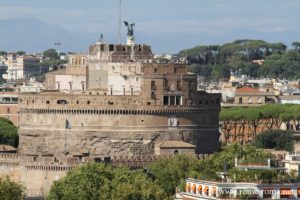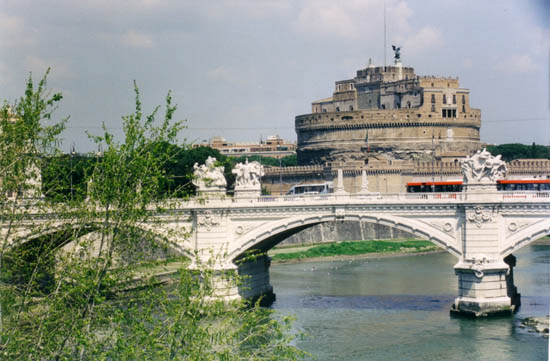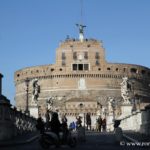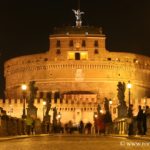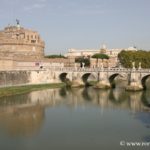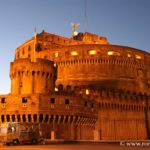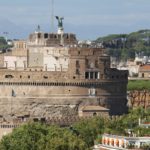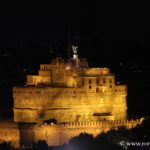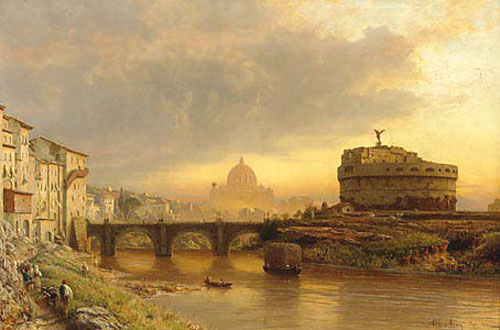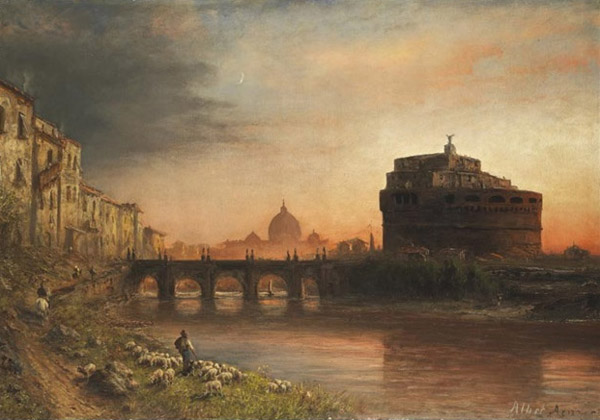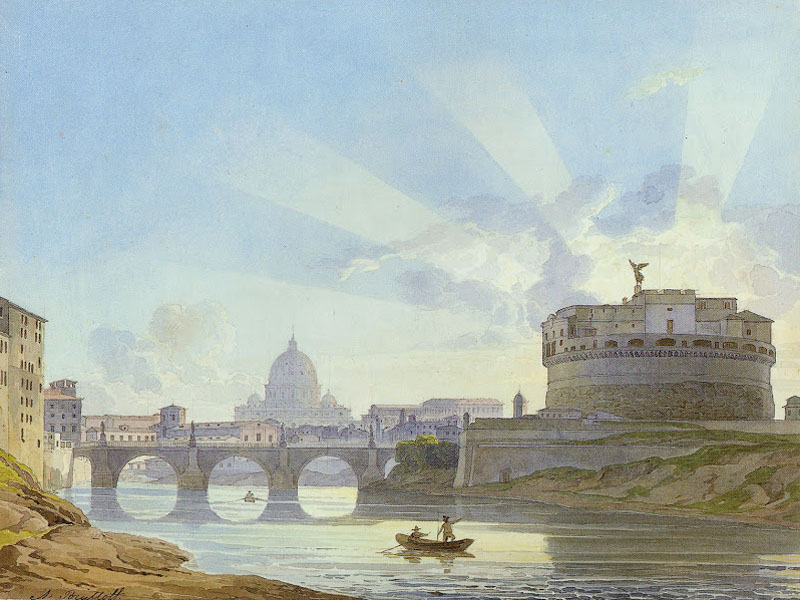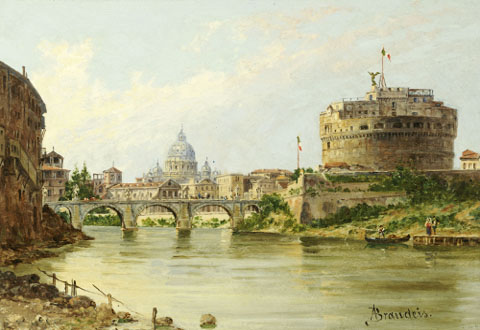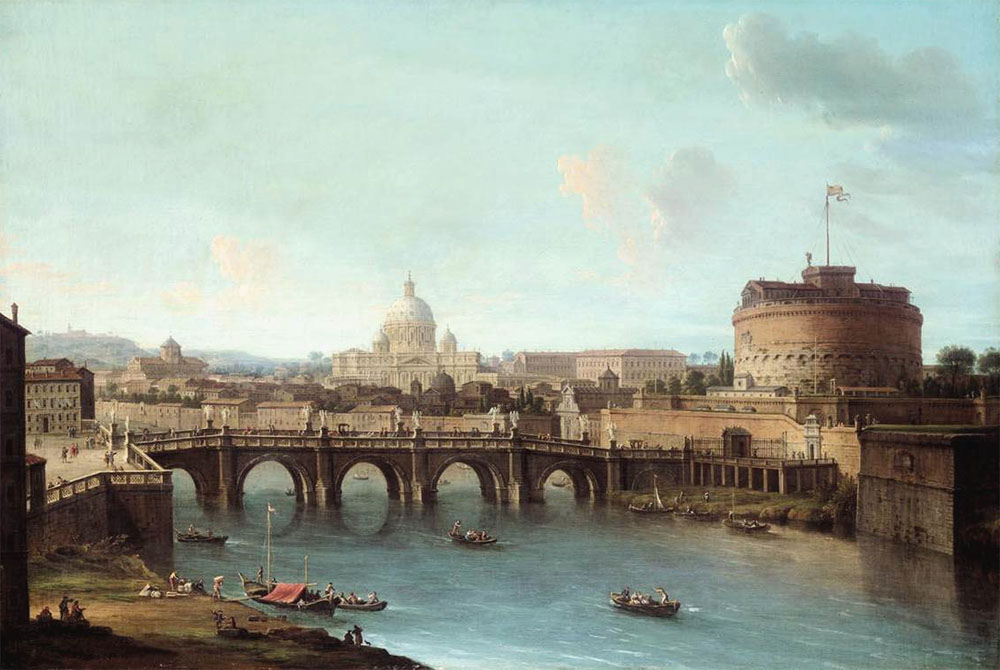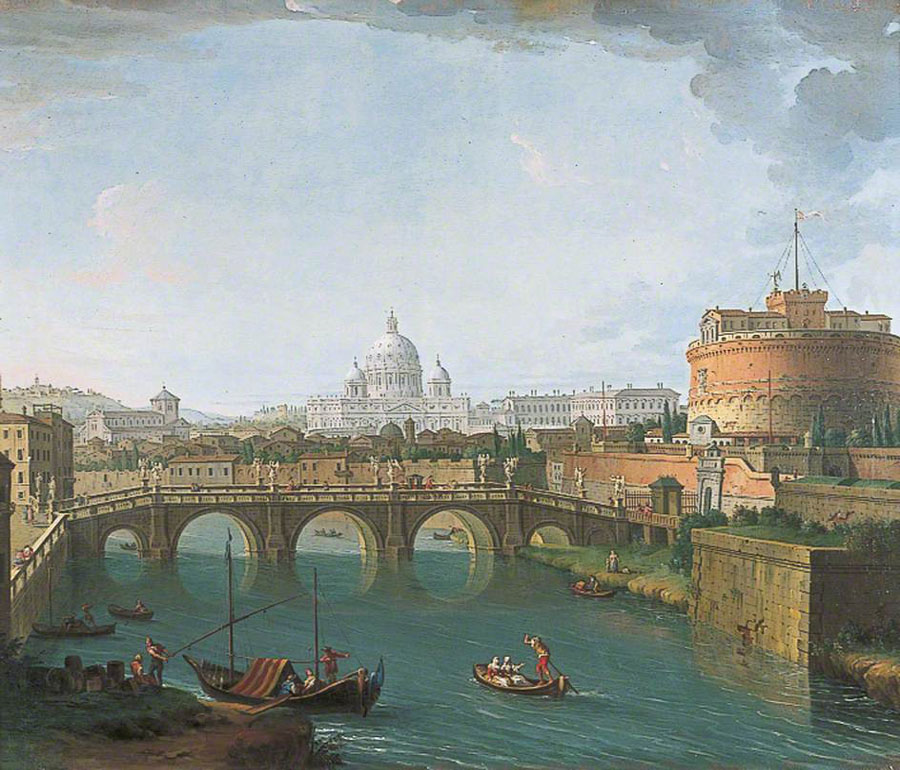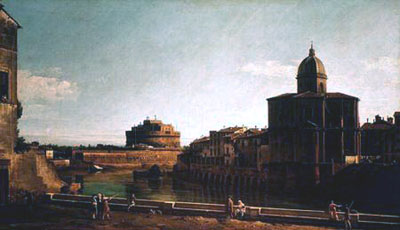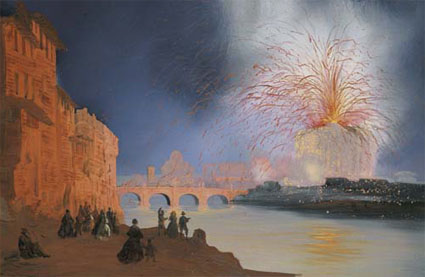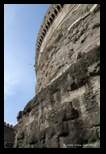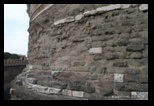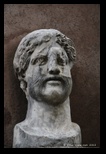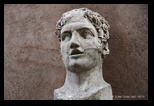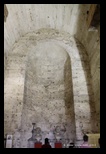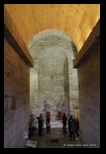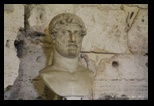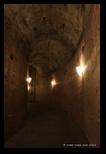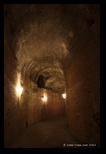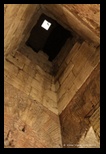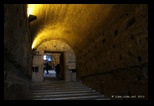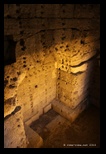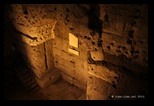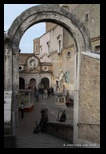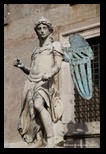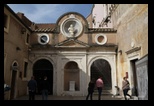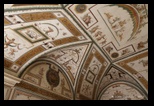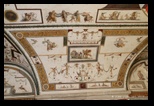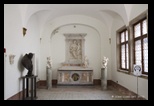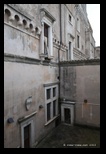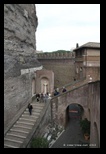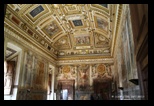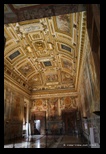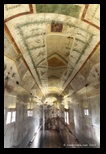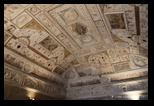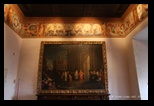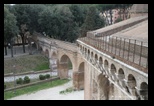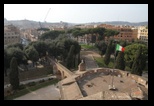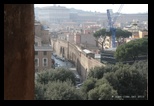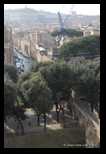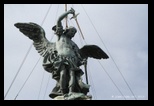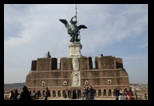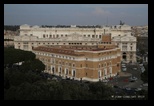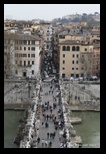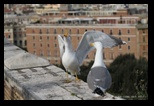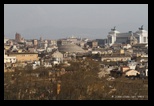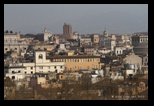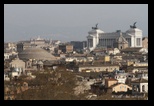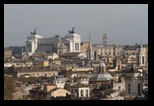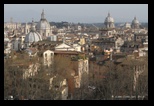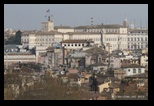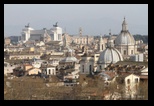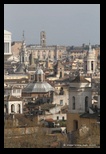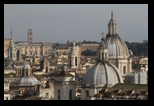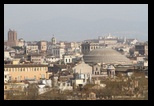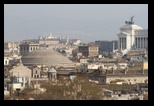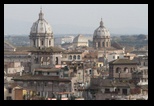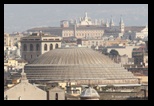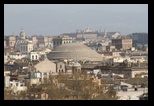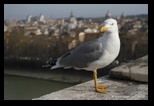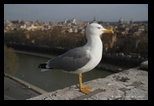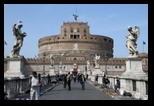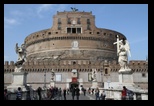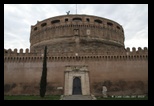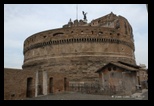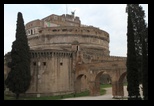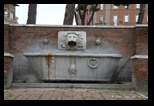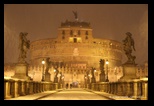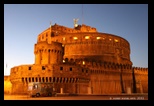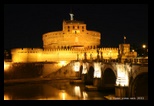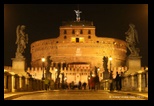The original structure of the Castel Sant’Angelo, as well as that of the Pons Ælius (today known as the Ponte Sant’Angelo), was designed between 117 and 138 AD by the architect Demetriano. This project aimed to build the mausoleum of Emperor Hadrian’s family, commonly called the Mausoleum of Hadrian. It also marked an advancement in the use of Roman concrete and architectural techniques.
From Imperial Mausoleum to Papal Fortress
Originally, the top of Hadrian’s mausoleum was crowned with an imposing statue representing the deified emperor as the Sun God, a symbol both religious and imperial. Some ancient descriptions also mention the presence of additional decorative elements, such as reliefs and inscriptions, now lost.
In 271, under the reign of Emperor Aurelian, defensive bastions were added to the mausoleum. These fortifications, integrated into the Aurelian Walls, provided strategic protection on the Tiber side and gradually transformed the site into a military fortress.
In 1277, the castle became the property of the Catholic Church, marking a complete transformation into a fortress-prison. A significant addition was the construction of the famous fortified passage, the « passetto di Borgo », directly connecting the castle to the Vatican buildings. This passage allowed the pope to escape in case of attack or siege.
The origin of the name and the angel statue
The name “Castel Sant’Angelo” comes from a miraculous event that occurred in 590. According to tradition, while a plague was devastating Rome, Pope Gregory I saw, at the top of the mausoleum, an angel lowering his sword as a sign of the end of the epidemic. This episode deeply marked the collective imagination and gave the monument its current name.
To commemorate this event, a wooden statue of the angel was placed at the top of the castle. Over the centuries, several versions of this statue were created, including marble and later bronze. The bronze statue, made in the 16th century, was melted down in 1527 to make weapons during the sack of Rome. The current statue, the sixth version, is a work created in 1753 by the Flemish artist Peter Anton von Verschaffelt.
Transformations and modifications
Castel Sant’Angelo underwent other notable transformations through the centuries, particularly under the pontificate of Alexander VI, who strengthened its fortifications and equipped it with new rooms intended both for defense and for comfort, with lavishly decorated residences.
Visit of the castle and its museum
Today, the interior of the building includes five distinct levels, allowing visitors to retrace the different eras of its history. They include rooms dating from the Roman era, medieval cells used as a prison, as well as reception rooms adorned with Renaissance frescoes.
Castel Sant’Angelo also houses a museum where artworks, armor, and historical archives related to its past are exhibited. It also regularly hosts temporary exhibitions.
Information about the castle
| Tickets to visit the Sant'Angelo Castle | |
| Hotels, rooms and apartments near the monument |
| Museo Nazionale di Castel Sant’Angelo Lungotevere Castello, 50 – 00193 Rome / tel. +39 06 6819111 / Info and reservations +39 06 32810 |
Opening hours and visitor conditions for Castel Sant’Angelo
|
Links and sources for more information
|
Photo gallery
- Castel Sant’Angelo
- Sant’Angelo bridge
- Ponte Sant’Angelo
- Ponte Sant’Angelo and castle
- Castel Sant’Angelo
- Sant’Angelo bridge and castle
- View of the castle Sant’Angelo
- View by night
- View by night
- Under the snow
Map and address
Address : Lungotevere Castello, 50, 00193 Roma RM, ItalieIf you see this after your page is loaded completely, leafletJS files are missing.
Ancient views in art
More photos
Articles about the castle Sant’Angelo
- Castel Sant’Angelo: visit and history
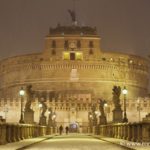 Visit the Castel Sant’Angelo in Rome, built on the mausoleum of Hadrian. Information, schedules and description of the monuments of ...
Visit the Castel Sant’Angelo in Rome, built on the mausoleum of Hadrian. Information, schedules and description of the monuments of ...

